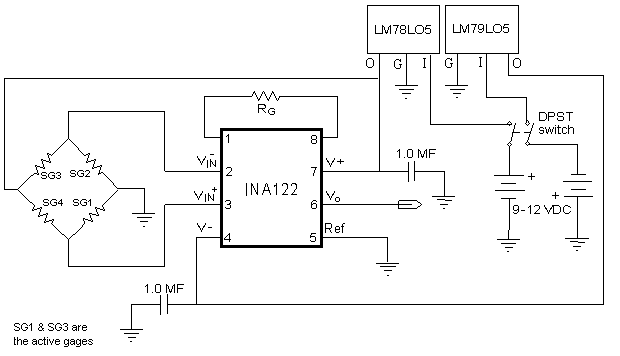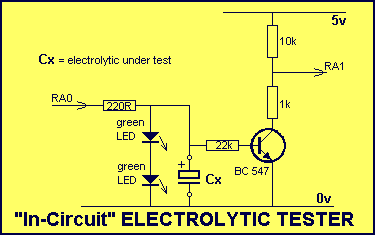
ELECTROLYTIC RUST REMOVAL

Experiments in rust electrolysis. The concept of using electricity to convert rust back into iron is not novel, as electrolysis has been employed for metal restoration by collectors and archaeologists for decades. The results can be impressive, revealing shiny metal after proper treatment. However, the exact requirements are often poorly understood, and the equipment is frequently crude in design. A simple setup utilizing household items can suffice, provided certain details are carefully considered. Commonly recommended equipment includes a plastic container, washing soda, steel plates, and a battery charger. However, improvements can be made by substituting an appropriate current-limited power supply for the battery charger, which can enhance results. Rust removal methods such as sandblasting or other abrasives effectively clean metal but are unsuitable for very old or valuable artifacts due to their destructive nature, removing both rust and good metal. Strong acids can dissolve rust, but they also attack the underlying metal. Weak acids like vinegar are ineffective on heavily rusted items. A method was needed to remove only the rust, with the possibility of salvaging some of the rusted metal, making electrolytic rust removal the most viable option. It is important to note that rust electrolysis is not a quick or magical solution; setting up the apparatus and conditions for electrolysis requires space and is time-consuming. Additionally, removing the loose converted rust post-treatment is messy and labor-intensive. However, diligent effort can yield worthwhile results. It should be emphasized that electrolytic cleaning is ineffective for non-ferrous metals such as copper, bronze, brass, pewter, tin, or aluminum, as the corrosion products on these metals are not formed by electrolytic action. In the case of copper and tin alloys, treatment would be harmless, but aluminum could be adversely affected by the alkaline solution and should not undergo this treatment. An example of the potential results from the electrolytic process can be illustrated with an old horseshoe discovered months earlier. This horseshoe, likely over a hundred years old, was in a severely corroded state, having been buried in the ground where a thick layer of flaky rust obscured any surface features. The corrosion was so advanced that no surface detail was discernible, including nails or their holes. Attempting to clean this horseshoe represented a significant test of the electrolytic process, but the decision was made to proceed to determine what could be salvaged.
The electrolysis process for rust removal involves a few critical components and steps. The setup typically includes a non-conductive container filled with a solution of water and washing soda, which acts as an electrolyte. The steel plates, serving as electrodes, are submerged in the solution, with one plate connected to the positive terminal (anode) and the other to the negative terminal (cathode) of the power supply. The rusted item, in this case, the horseshoe, is connected to the cathode. When the current flows through the solution, it initiates a chemical reaction that converts rust (iron oxide) back into iron, allowing the rust to be released from the surface of the metal.
The choice of a current-limited power supply is crucial as it prevents excessive current flow that could damage the item being restored. The optimal current density for rust removal is typically around 1-2 amps per square foot of the surface area of the item being treated. This ensures that the electrolysis process is effective without causing harm to the underlying metal.
Monitoring the process is essential, as the duration of electrolysis can vary depending on the extent of rust and the size of the item. It may take several hours to a couple of days of continuous operation to achieve satisfactory results. Regular inspection is necessary to remove any loose rust that accumulates during the process, which can be done with a soft brush or cloth.
After completing the electrolysis, the item should be carefully rinsed with clean water to remove any residual electrolyte and loose rust particles. A final inspection will reveal the condition of the metal beneath the rust, which can then be treated with a protective coating to prevent future corrosion.
In conclusion, while the electrolytic rust removal process requires careful setup and monitoring, the potential for restoring valuable artifacts makes it a worthwhile endeavor for collectors and historians alike.Experiments in rust electrolysis. The idea of using electricity to convert rust back into iron is not a new one, and electrolysis has been used for metal restoration by collectors and archaeologists for decades and the results can be very impressive, with shiny metal being visible after proper treatment. The exact requirements, though, are sometimes poorly understood and the equipment often crude in design, although a simple setup constructed using household items is quite adequate as long as attention is paid to certain details. The equipment commonly suggested consists of simply a plastic container, some washing soda, steel plates and a battery charger, although some refinement to this equipment, in particular substituting an appropriate current limited power supply for the battery charger, will pay dividends in improved results, so more details on this later.
Rust removal using sand blasting or other abrasives certainly cleans the metal, but this is unsuitable for very old or valuable artifacts as it is destructive, removing good metal along with the rust. Rust can also be dissolved using strong acids, but the acid also attacks the good metal. (Weak acids such as vinegar just don`t do the job on heavily rusted items. ) I required a way of removing just the rust and no more, with the hope of possibly even trying to salvage some of the rusted metal, and electrolytic rust removal seemed to be the best way to proceed.
Don`t make the mistake of thinking that rust electrolysis is some magical, or quick and easy way of removing rust. Setting up the apparatus and conditions for electrolysis needs space and is time consuming, and removing the loose converted rust once treatment has been completed also takes time and is quite messy.
However, if you are prepared to put in the effort, I believe the results are worth the trouble. Please note that electrolytic cleaning doesn`t work for non-ferrous metals such as copper, bronze, brass, pewter, tin or aluminium. The corrosion products found on these metals are rarely formed by electrolytic action and therefore the process cannot be reversed electrolytically.
In the case of copper and tin alloys the treatment would be harmless, although I understand that aluminium could be adversely affected by the alkaline solution and so should not be subjected to this treatment. I feel it would be useful at this point to give an example of the kind of results that can be obtained using the electrolytic process and to describe the conditions under which they were achieved.
After much searching for a suitable subject, I finally decided on an old horseshoe I`d found some months earlier. This horseshoe was probably well over a hundred years old and in a particularly badly corroded condition, having spent much of its time buried in the ground where it had developed a thick layer of flaky rust which had obliterated any surface features.
To the left is a photograph of the shoe, and it is obviously in a very advanced state of corrosion and much damage will doubtlessly have occurred to the underlying metal. Note that even in the high resolution version of the image no surface detail can be distinguished, with no nails or their holes visible.
Attempting to clean this would represent an extreme test of the electrolytic process, but I decided to give it a try anyway just to see what could be salvaged. The shoe was initially prepared 🔗 External reference
The electrolysis process for rust removal involves a few critical components and steps. The setup typically includes a non-conductive container filled with a solution of water and washing soda, which acts as an electrolyte. The steel plates, serving as electrodes, are submerged in the solution, with one plate connected to the positive terminal (anode) and the other to the negative terminal (cathode) of the power supply. The rusted item, in this case, the horseshoe, is connected to the cathode. When the current flows through the solution, it initiates a chemical reaction that converts rust (iron oxide) back into iron, allowing the rust to be released from the surface of the metal.
The choice of a current-limited power supply is crucial as it prevents excessive current flow that could damage the item being restored. The optimal current density for rust removal is typically around 1-2 amps per square foot of the surface area of the item being treated. This ensures that the electrolysis process is effective without causing harm to the underlying metal.
Monitoring the process is essential, as the duration of electrolysis can vary depending on the extent of rust and the size of the item. It may take several hours to a couple of days of continuous operation to achieve satisfactory results. Regular inspection is necessary to remove any loose rust that accumulates during the process, which can be done with a soft brush or cloth.
After completing the electrolysis, the item should be carefully rinsed with clean water to remove any residual electrolyte and loose rust particles. A final inspection will reveal the condition of the metal beneath the rust, which can then be treated with a protective coating to prevent future corrosion.
In conclusion, while the electrolytic rust removal process requires careful setup and monitoring, the potential for restoring valuable artifacts makes it a worthwhile endeavor for collectors and historians alike.Experiments in rust electrolysis. The idea of using electricity to convert rust back into iron is not a new one, and electrolysis has been used for metal restoration by collectors and archaeologists for decades and the results can be very impressive, with shiny metal being visible after proper treatment. The exact requirements, though, are sometimes poorly understood and the equipment often crude in design, although a simple setup constructed using household items is quite adequate as long as attention is paid to certain details. The equipment commonly suggested consists of simply a plastic container, some washing soda, steel plates and a battery charger, although some refinement to this equipment, in particular substituting an appropriate current limited power supply for the battery charger, will pay dividends in improved results, so more details on this later.
Rust removal using sand blasting or other abrasives certainly cleans the metal, but this is unsuitable for very old or valuable artifacts as it is destructive, removing good metal along with the rust. Rust can also be dissolved using strong acids, but the acid also attacks the good metal. (Weak acids such as vinegar just don`t do the job on heavily rusted items. ) I required a way of removing just the rust and no more, with the hope of possibly even trying to salvage some of the rusted metal, and electrolytic rust removal seemed to be the best way to proceed.
Don`t make the mistake of thinking that rust electrolysis is some magical, or quick and easy way of removing rust. Setting up the apparatus and conditions for electrolysis needs space and is time consuming, and removing the loose converted rust once treatment has been completed also takes time and is quite messy.
However, if you are prepared to put in the effort, I believe the results are worth the trouble. Please note that electrolytic cleaning doesn`t work for non-ferrous metals such as copper, bronze, brass, pewter, tin or aluminium. The corrosion products found on these metals are rarely formed by electrolytic action and therefore the process cannot be reversed electrolytically.
In the case of copper and tin alloys the treatment would be harmless, although I understand that aluminium could be adversely affected by the alkaline solution and so should not be subjected to this treatment. I feel it would be useful at this point to give an example of the kind of results that can be obtained using the electrolytic process and to describe the conditions under which they were achieved.
After much searching for a suitable subject, I finally decided on an old horseshoe I`d found some months earlier. This horseshoe was probably well over a hundred years old and in a particularly badly corroded condition, having spent much of its time buried in the ground where it had developed a thick layer of flaky rust which had obliterated any surface features.
To the left is a photograph of the shoe, and it is obviously in a very advanced state of corrosion and much damage will doubtlessly have occurred to the underlying metal. Note that even in the high resolution version of the image no surface detail can be distinguished, with no nails or their holes visible.
Attempting to clean this would represent an extreme test of the electrolytic process, but I decided to give it a try anyway just to see what could be salvaged. The shoe was initially prepared 🔗 External reference





